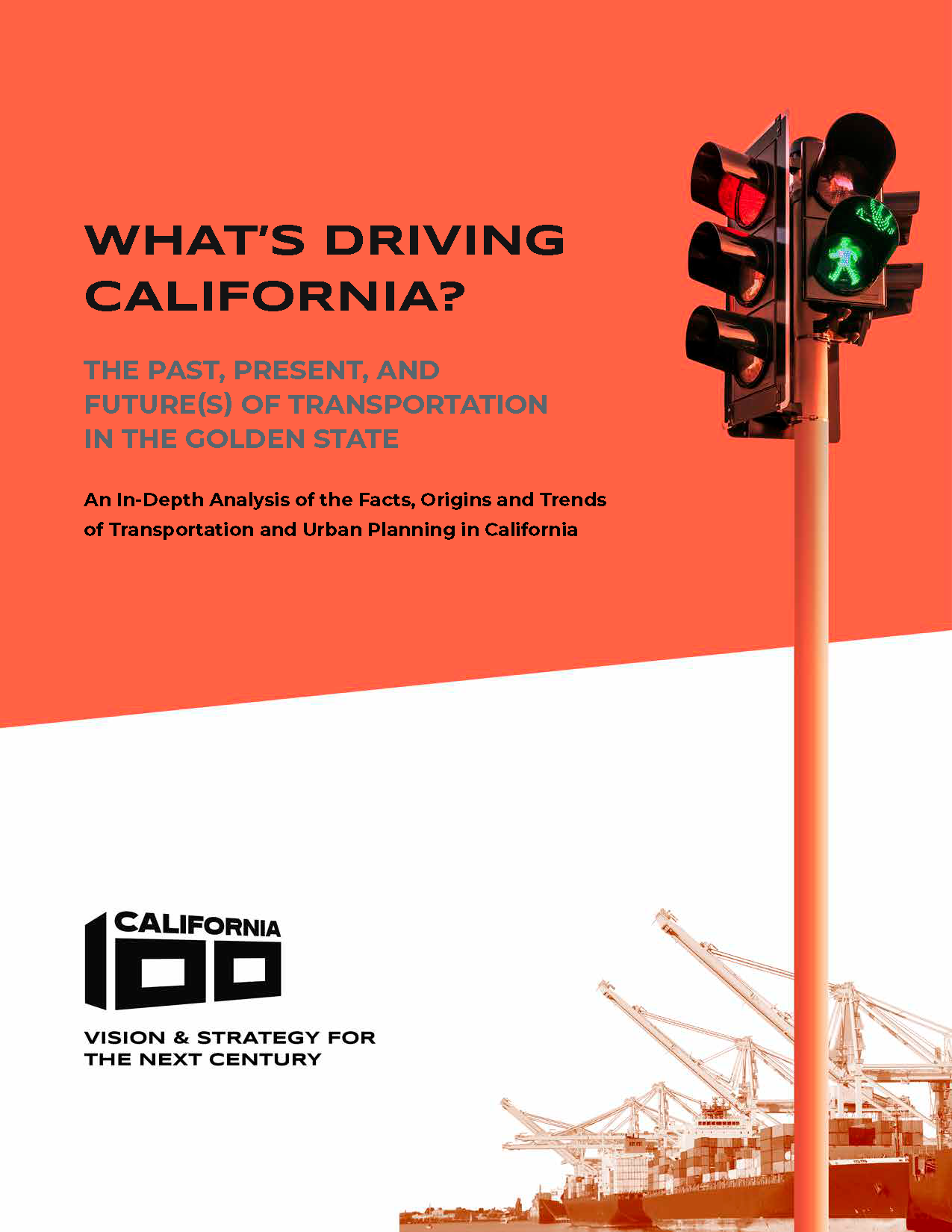Date: March 29, 2022
Author(s): Jacob L. Wasserman, Mark Garrett, Hao Ding, Miriam Pinski, Nataly Rios, John Gahbauer, Brian D. Taylor
Abstract
This report examines transportation in California: where we are today, how we got here, and where we might be headed. We begin with facts on travel and transportation systems in California today. The vast majority of personal travel is by car across all socio-economic groups, and commercial travel is by truck. Public transit plays an important role in the biggest cities but a small one elsewhere; walking is the most popular way to get around outside of a car or truck. Californians are taking fewer trips overall, though reduced vehicle travel for personal trips is more than offset by increases in commercial travel and deliveries. We next explore the decades of public and private land development and transportation systems that have shaped the current state of play. We explore the state’s massive investments in freeways—both between and within cities—and its land use policies complementary to driving. Low-density land uses, exemplified by dispersed single-family housing, have encouraged automobile ownership and use, resulting in suburban living and universal automobile access for most of the population, at the cost of increasing travel distances, increasing isolation for those unable to drive, chronic traffic congestion, health- and environment-threatening vehicle emissions, and a housing affordability crisis. Today’s transportation problems stem, in significant part, from yesterday’s land use decisions. We then consider factors that have either recently come to the fore or are likely to emerge in the near future: the growing reliance on automobile and truck travel and declining in transit use (both before and during the pandemic), shifting patterns of public spending on transportation, changing patterns of jobs and housing locations, the travel habits of younger generations, advancements in goods movement, and the challenges of resilience in disasters. Technology, too, is reshaping Californians’ mobility, with electrification of the vehicle fleet, technology-enabled mobility services, telecommuting, and the gradual automation of driving. We conclude by reviewing possible context-specific reforms to reshape transportation in the state, in order to better manage vehicle travel and reduce chronic congestion, shift patterns of development to make them less car-dependent, and increase access for all.
About the Project
This project for the California 100 initiative examines transportation in California: where we are today, how we got here, and where we might be headed. We begin with facts on travel and transportation systems in California today. We next explore the decades of public and private land development and transportation systems that have shaped the current state of play: today’s transportation problems stem, in significant part, from yesterday’s land use decisions. We then consider factors that have either recently come to the fore or are likely to emerge in the near future. We review possible context-specific reforms to reshape transportation in the state, in order to better manage vehicle travel and reduce chronic congestion, shift patterns of development to make them less car-dependent, and increase access for all. Finally, we summarize the findings from a diverse panel of transportation experts convened to explore the possibilities, pitfalls, and implications of four possible future transportation and land use scenarios for California.


